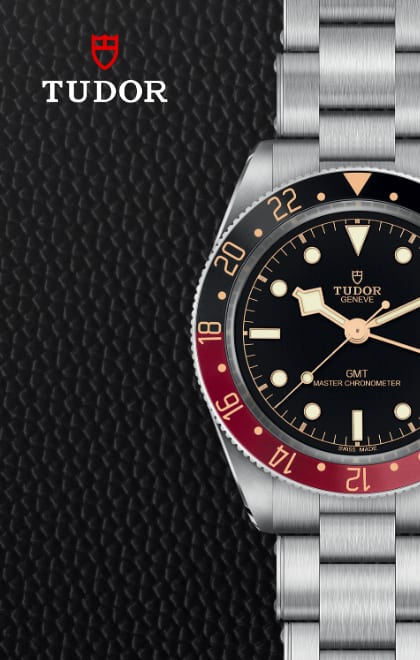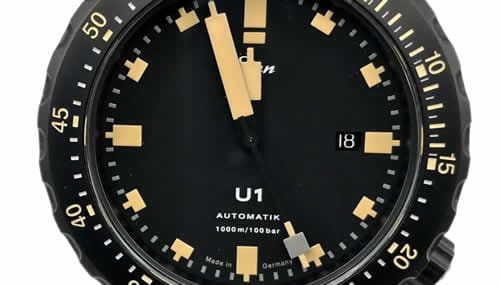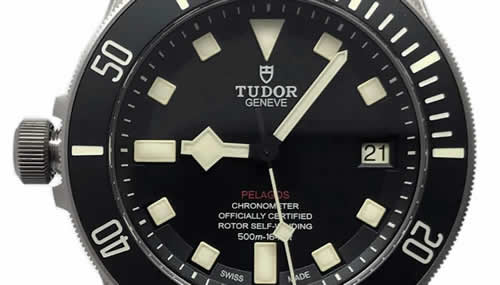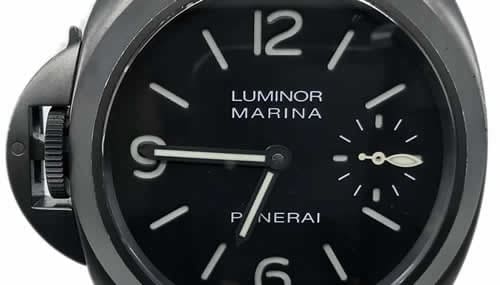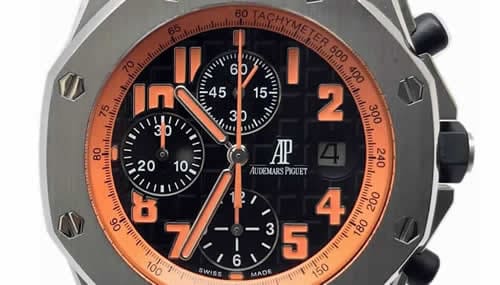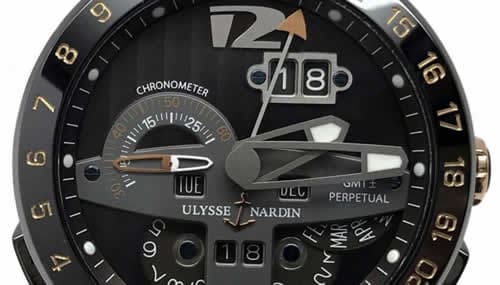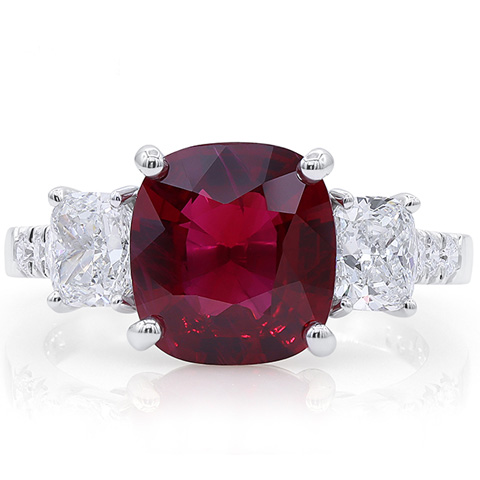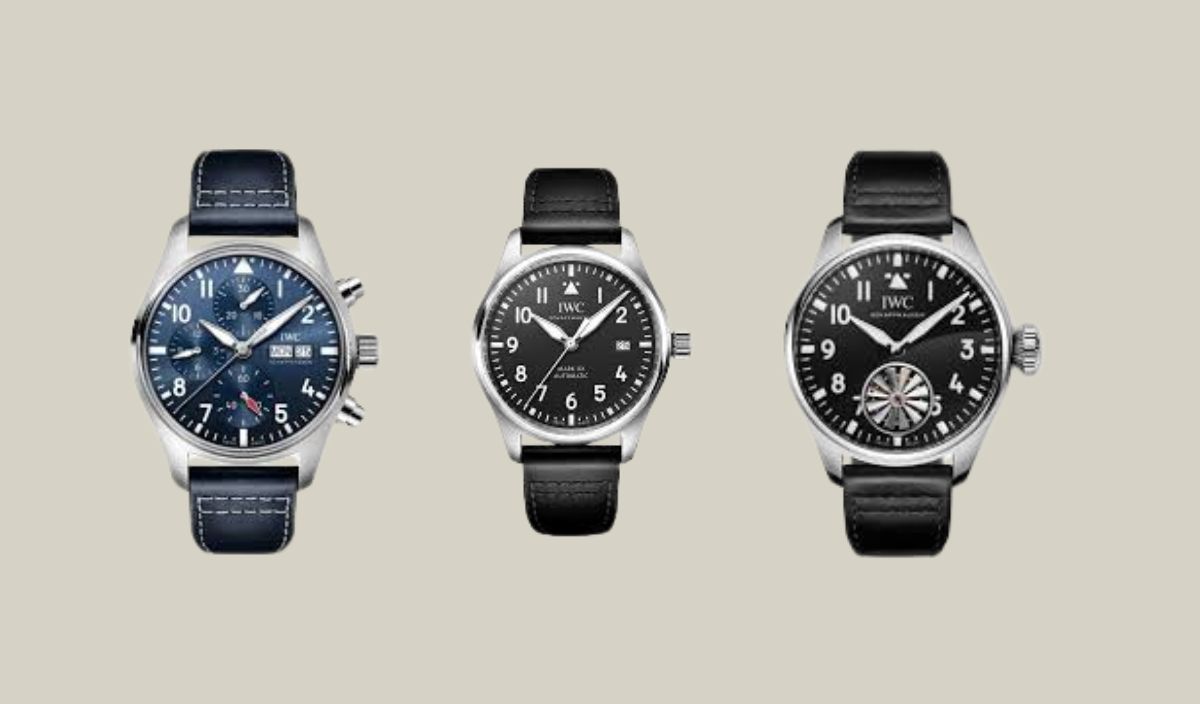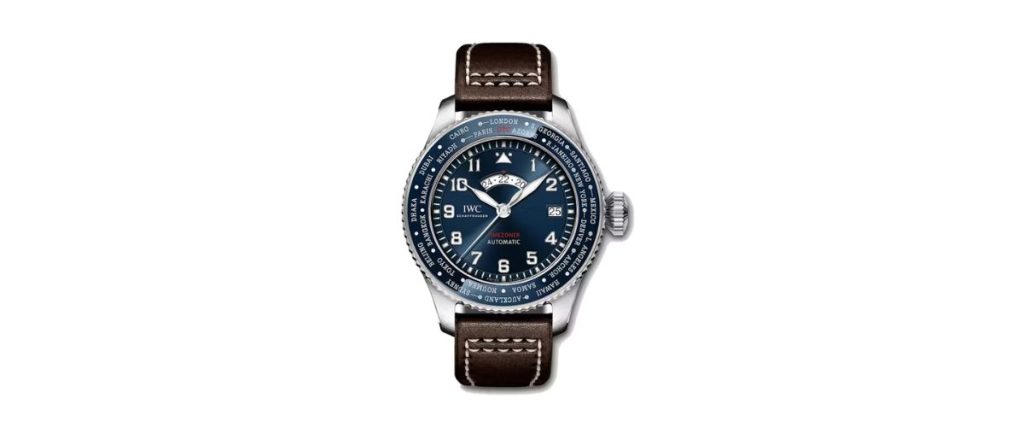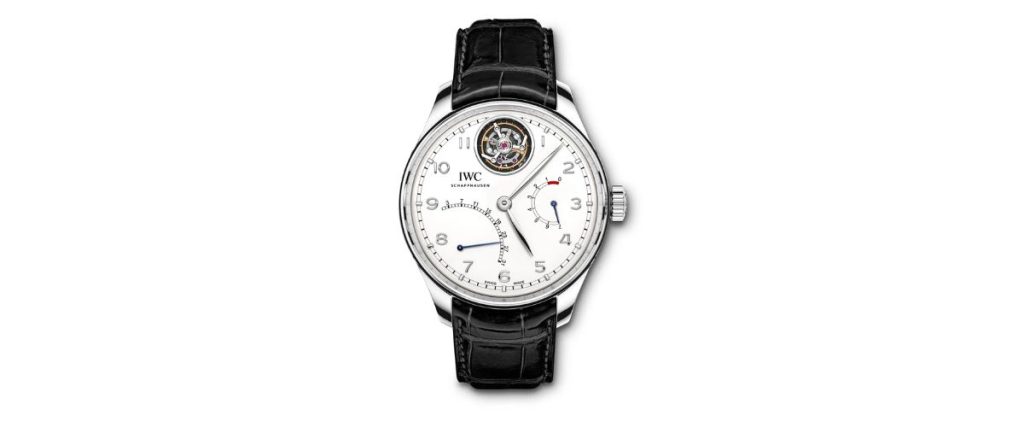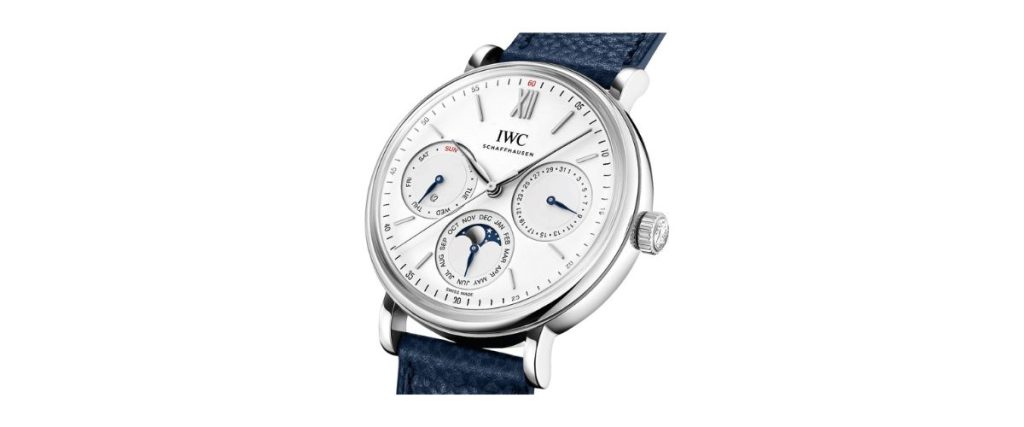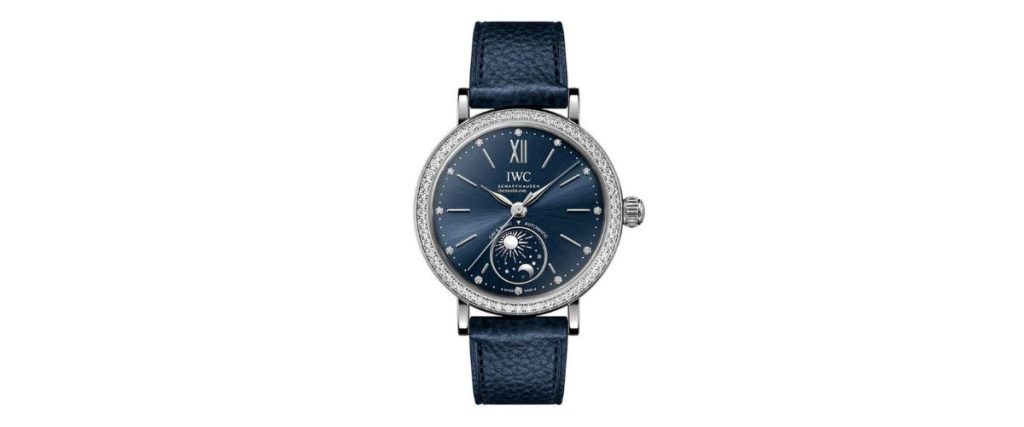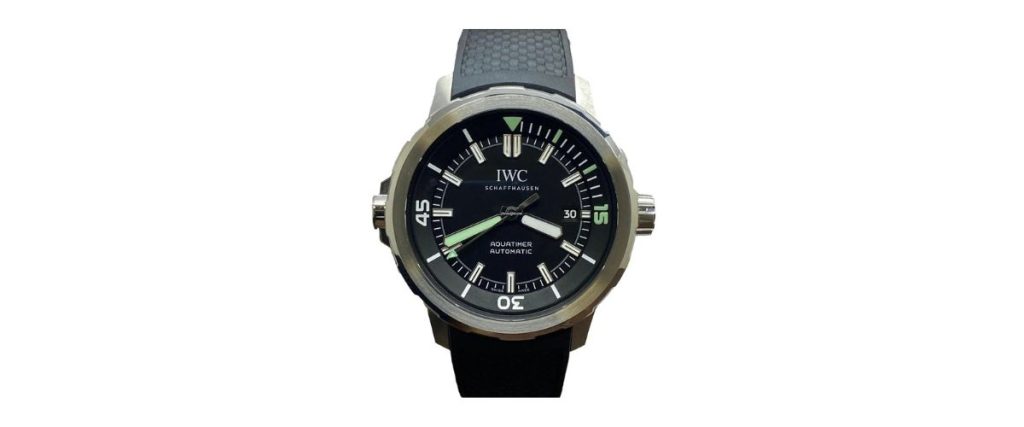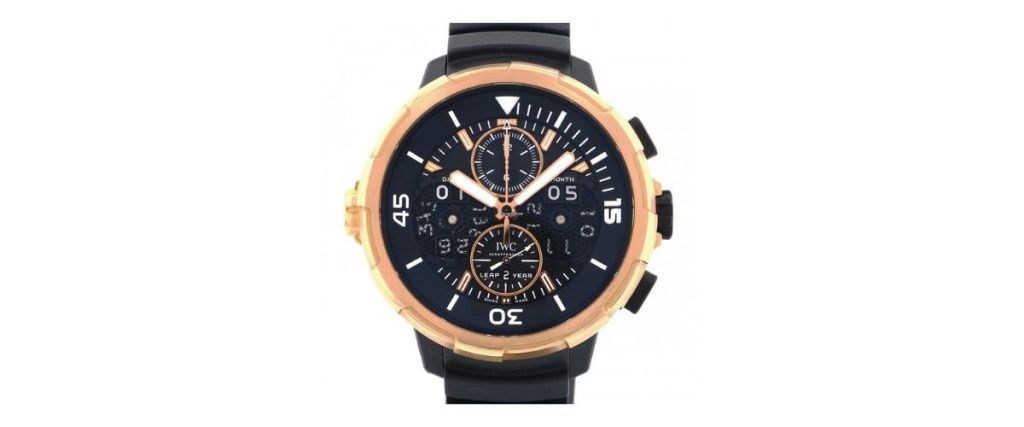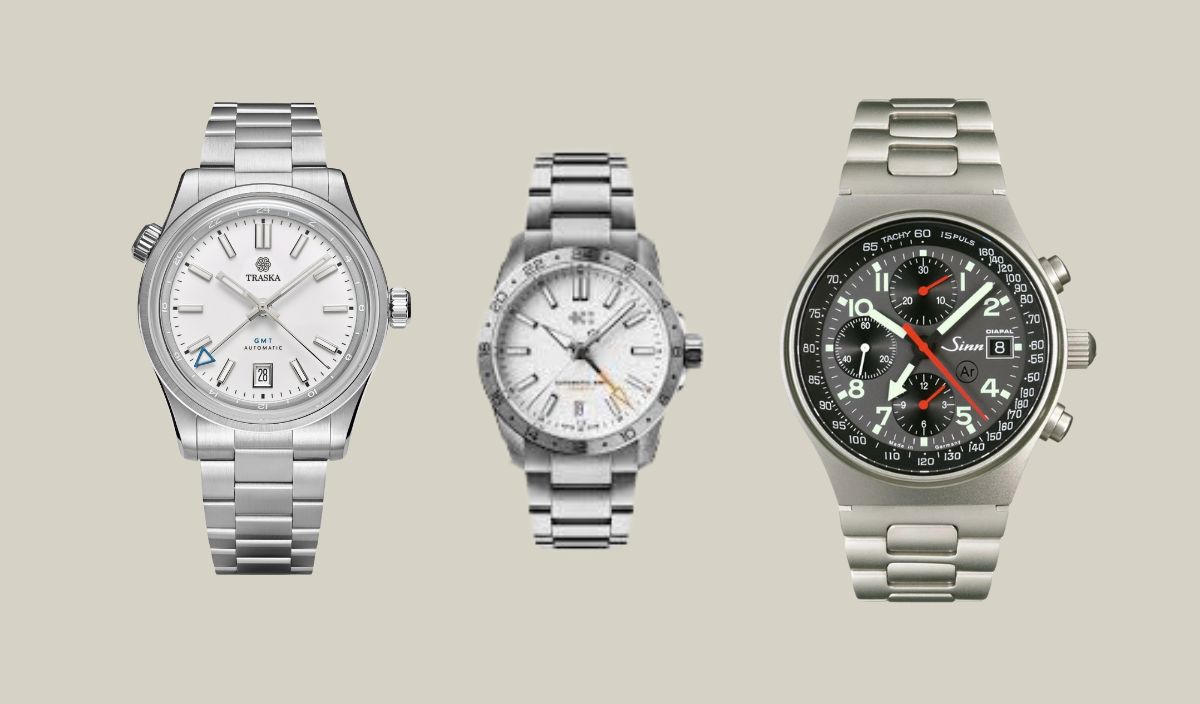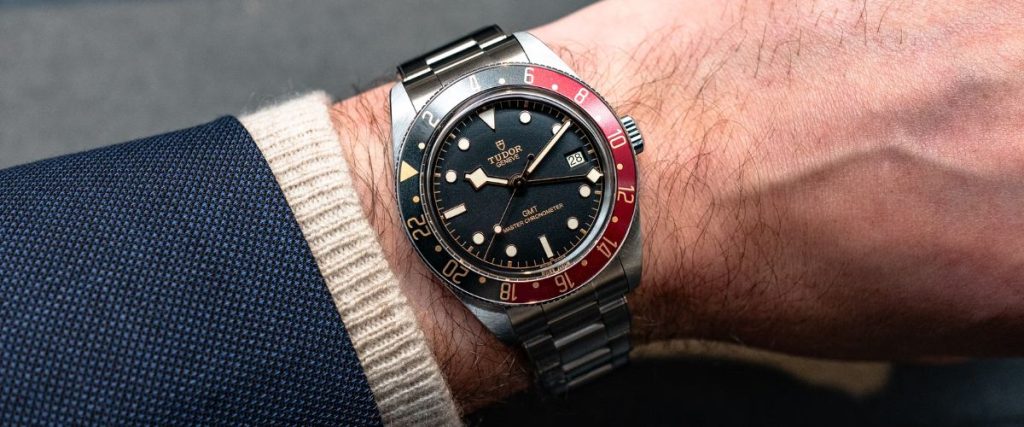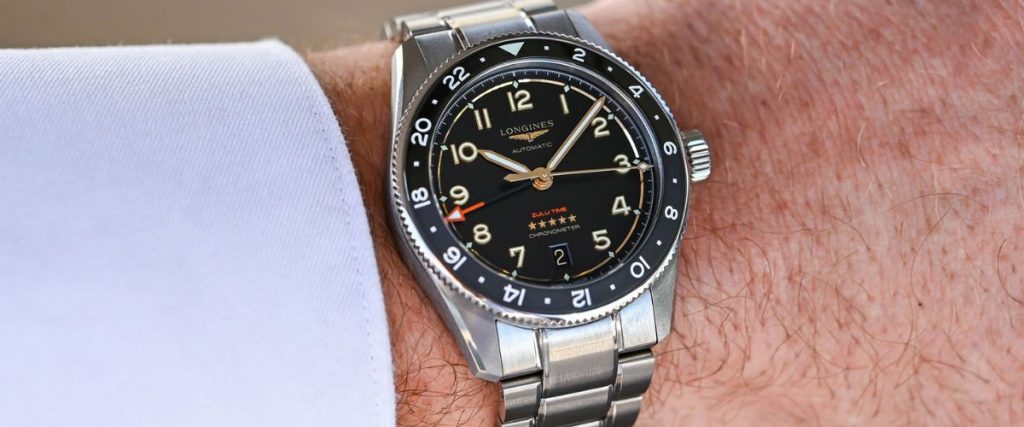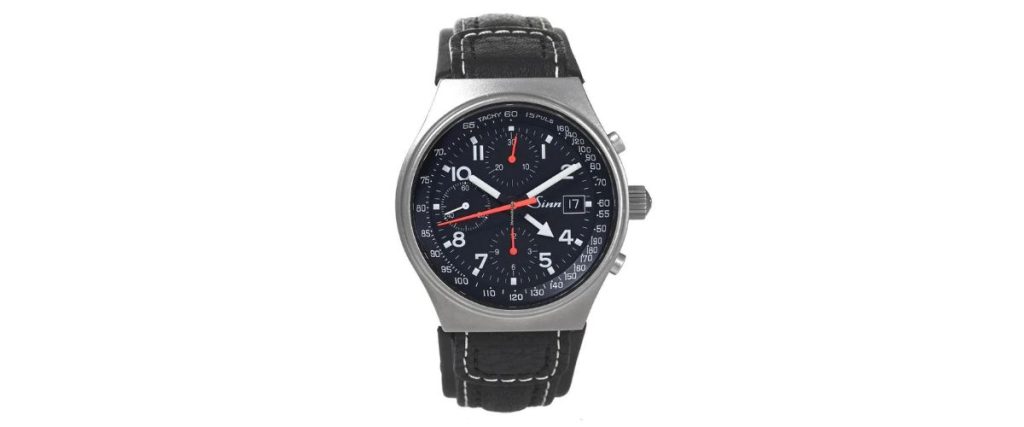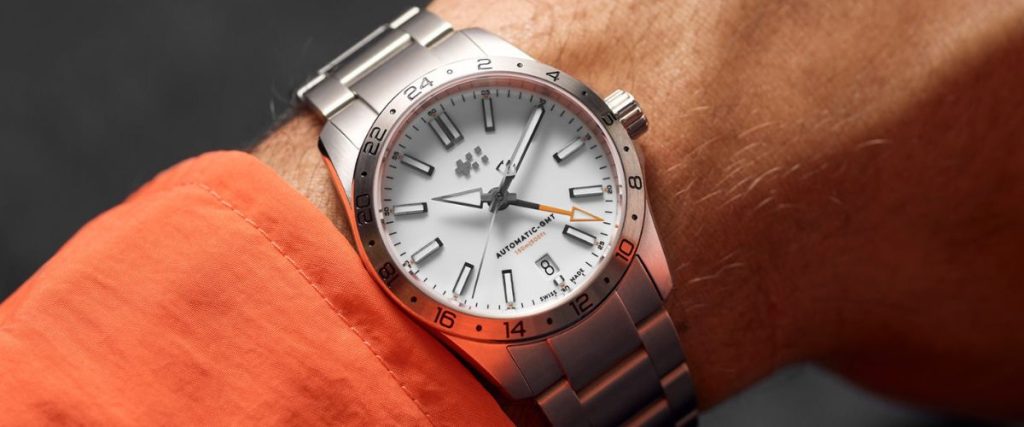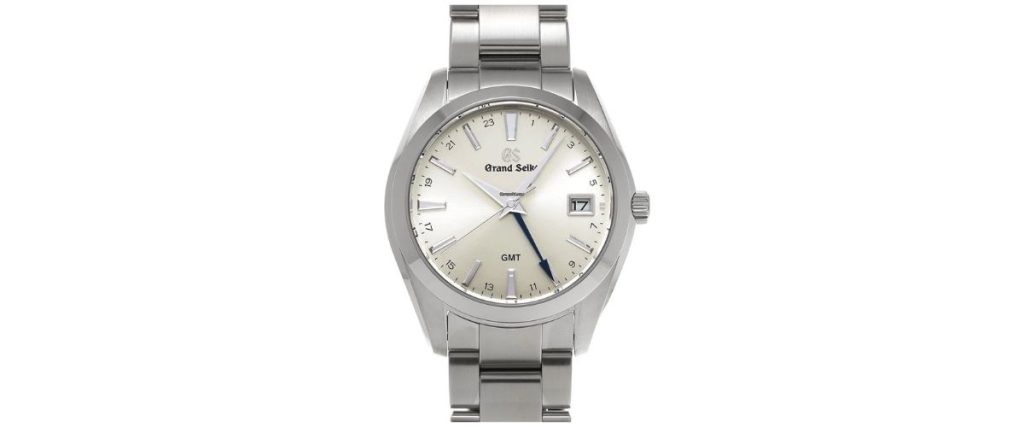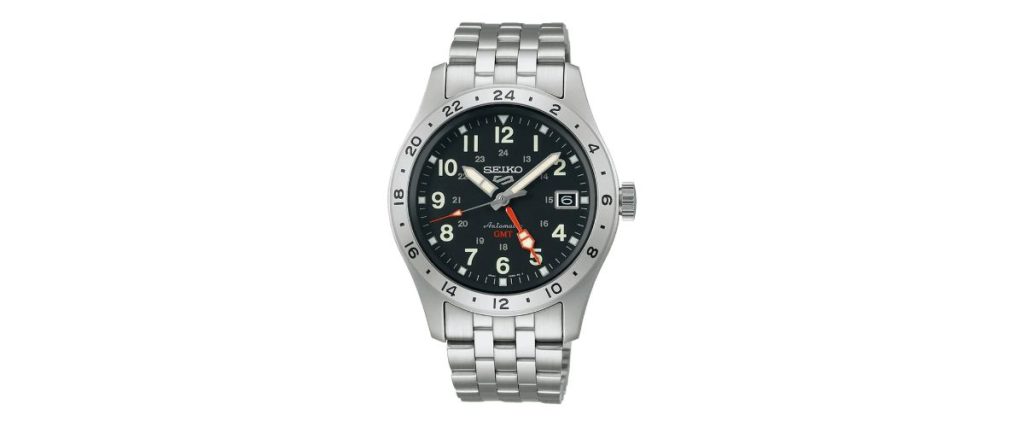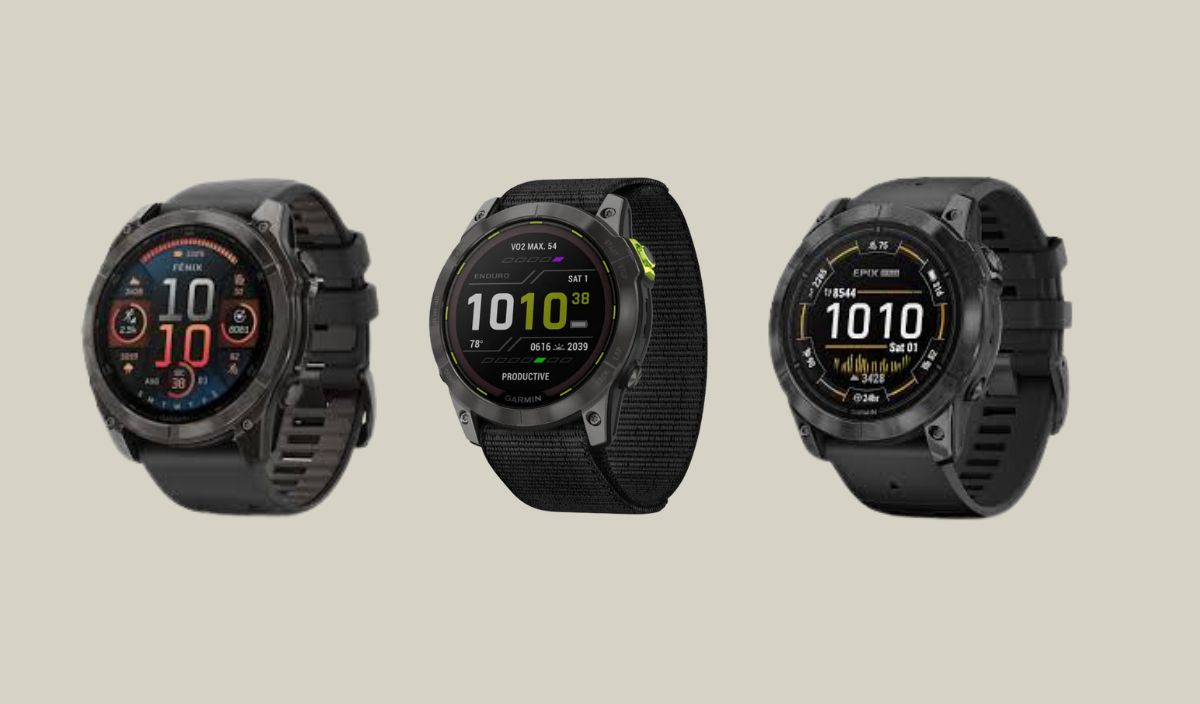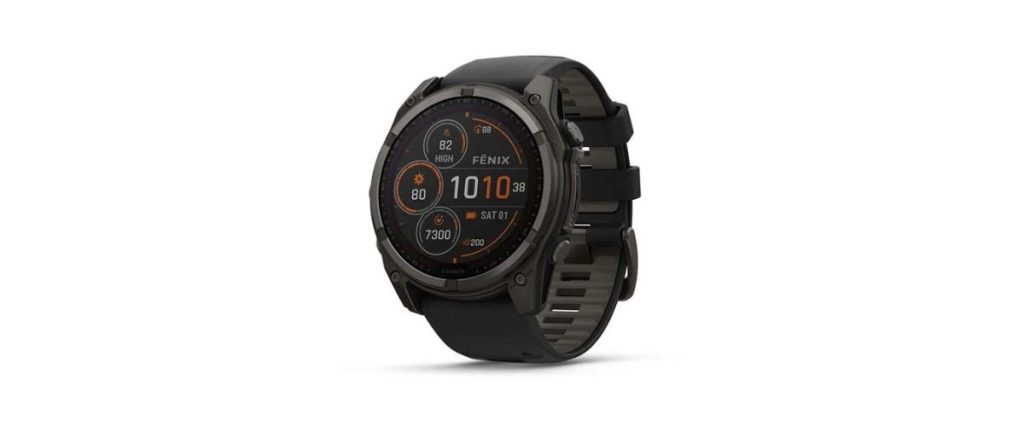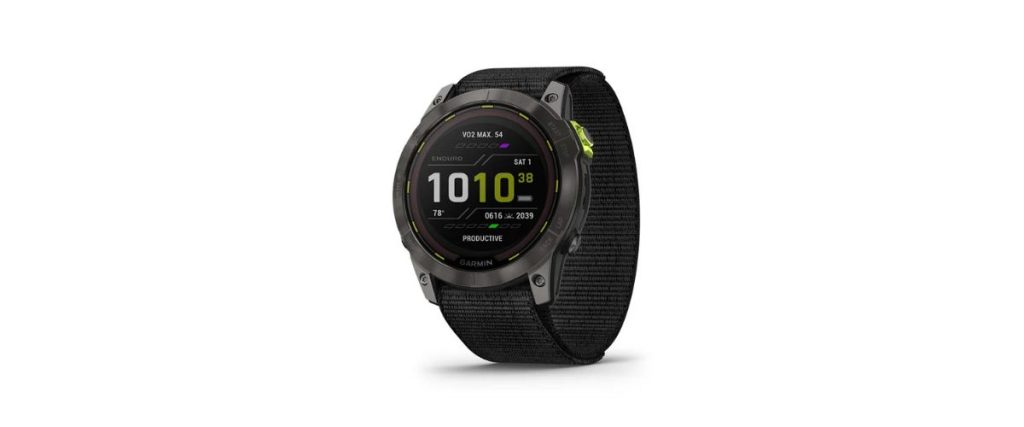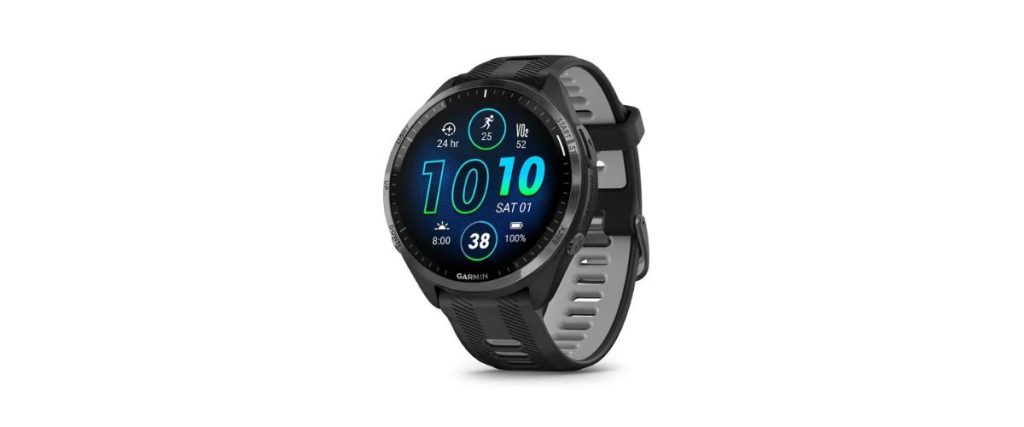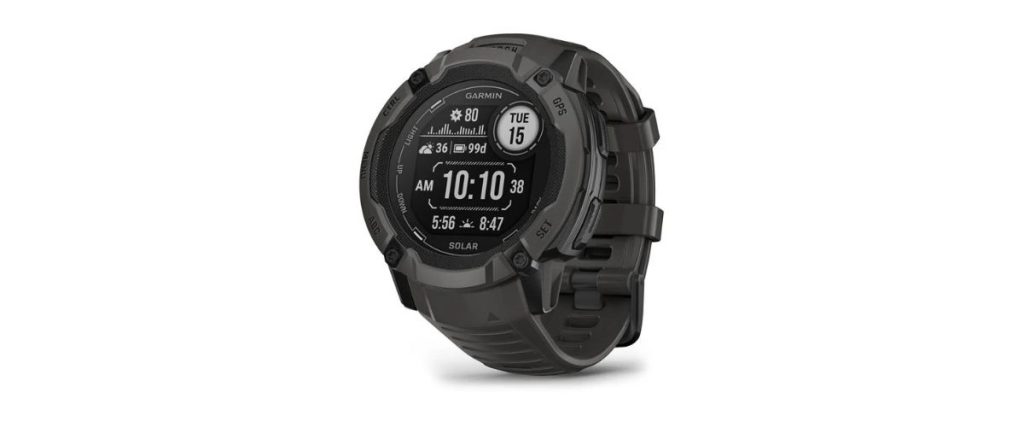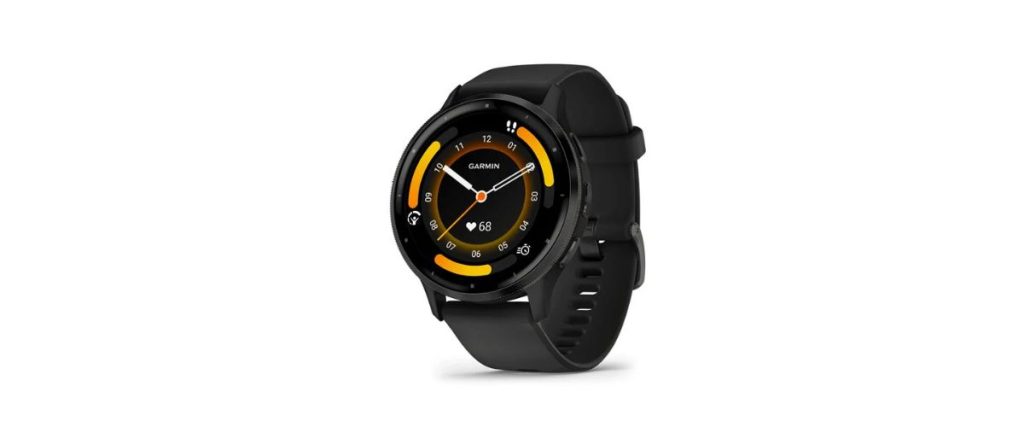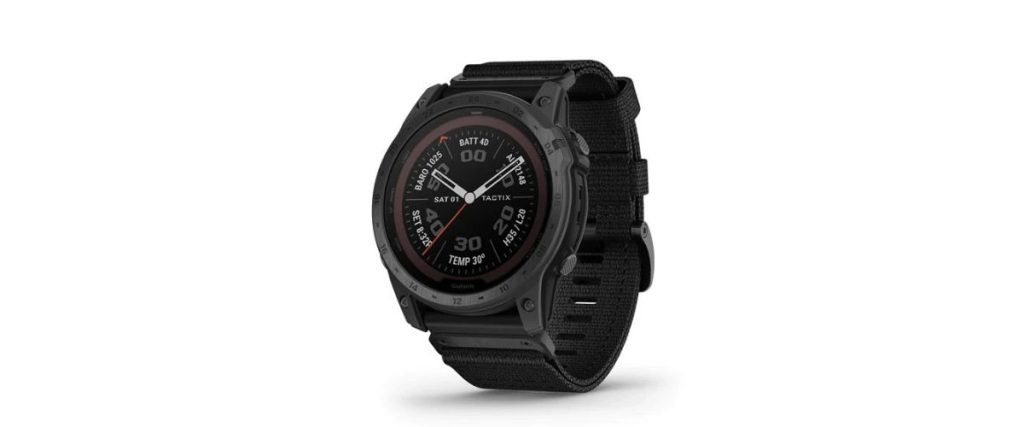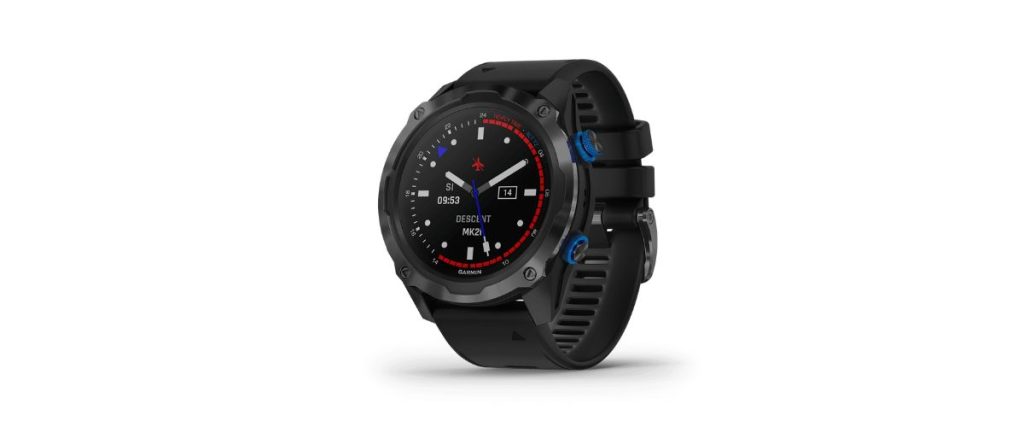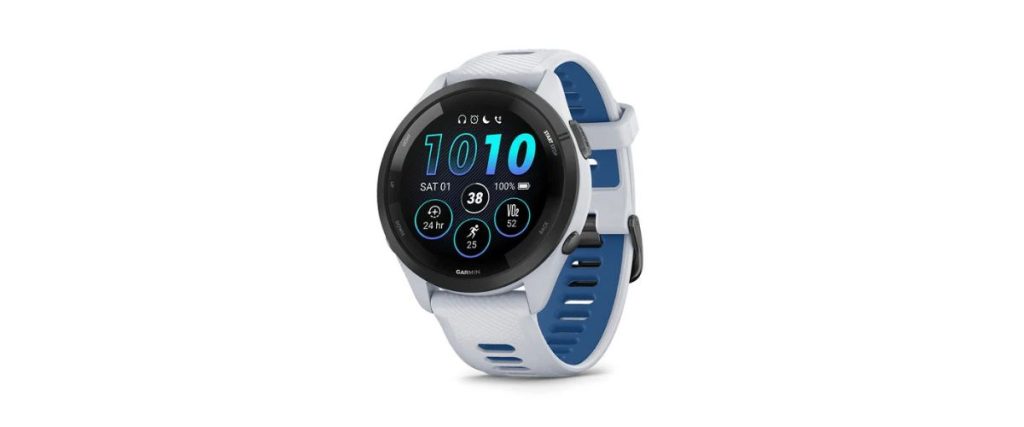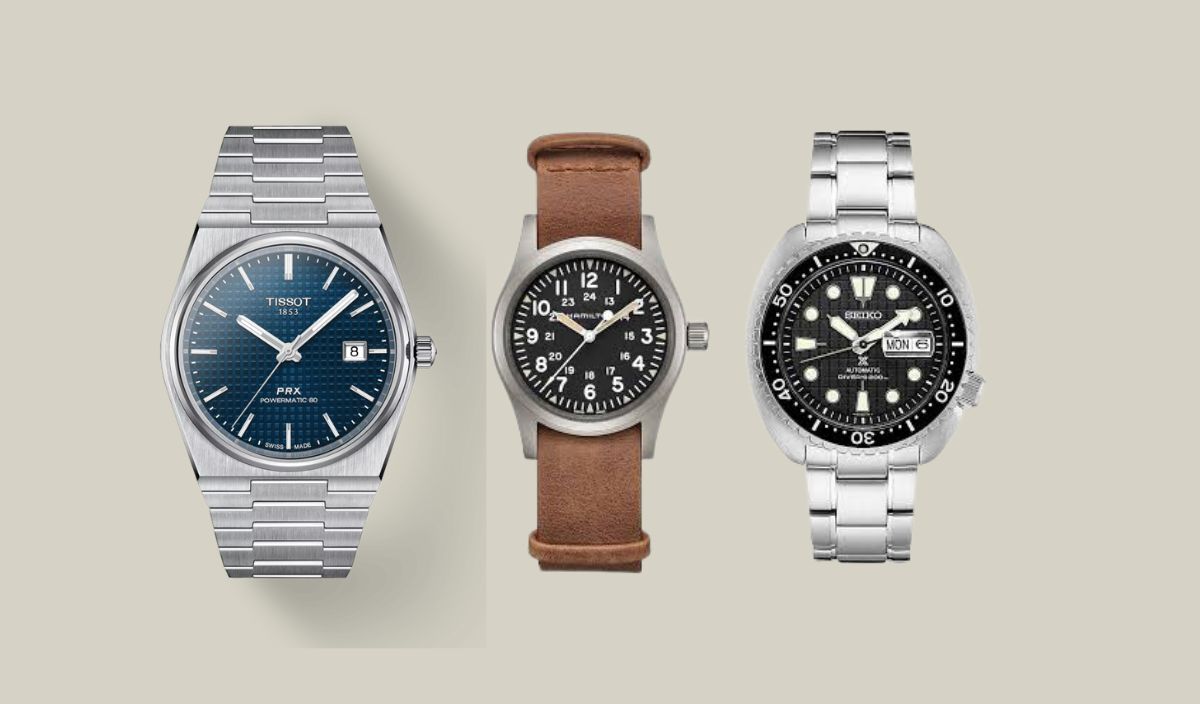
It isn’t necessarily difficult to find a mechanical watch under $1,000, but it’s more about finding the right quality. You get the benefit of reliable craftsmanship that doesn’t come with a retail price that’s out of range. The way I see it, mechanical watches under the $1,000 mark are a great option for the everyman.
Whether you’re a first-time buyer or consider yourself an enthusiast, you’d be surprised at how many quality timepieces you can find in this category. There’s definitely no shortage, but you want to get into the technical details before you start spending money.
From my perspective, every model listed in this article has the balance you need to validate the cost. Get a closer look at 16 of the best mechanical watches that you can find for under $1,000 right now.
Choosing the Right Mechanical Watch
If you aren’t familiar with the terminology, mechanical watches work off of a wound spring, but they can be automatic as well. That’s also the reason I find it so important to look into every layer of the design, so you know what you’re getting into.
Considering the price point, reliability is what I like to focus on most. I fully intend to keep the watches I buy for a lifetime, and that requires a decent amount of research. Personally, I’m a fan of hand-wound designs as it offers a more tactile experience.
Although the technical details matter, that doesn’t mean you should overlook style. Every timepiece mentioned in this article is bound to impress and surely doesn’t look cheap in any sense of the word.
Regardless of how much experience I have in the industry, I prefer to get into the fine details, as that’s what really sells a price tag for me.
Best Mechanical Watches Under $1,000
In reality, there are definitely more than 16 stellar options on the market, but those mentioned in this article stood out for more than one reason. Over the years, I have definitely broken the bank just to get my hands on a nice watch, but that’s not what we’re doing here.
Don’t let the under $1,000 mark fool you, as each timepiece mentioned here looks far more expensive than it retailed for. Of course, this comes from personal opinion, but I wouldn’t throw just any mechanical in this list if I didn’t feel it was worth the buy.
1. Hamilton Field Mechanical 38mm (ref. H69439931)

Featuring a military-inspired design, the watch might look simple, but Hamilton knows a thing or two about functionality. It’s reminiscent of a 1960s soldier’s watch with a modern spin on the engineering.
You’re working with a hand-wound movement, an H-50 caliber, more specifically, on top of a sizable 80-hour power reserve.
I honestly love the field specs of this watch, as the brand definitely took a classic approach. This can be seen in the stainless steel 38mm case, with a bold black dial and durable NATO strap as well. In today’s world, the watch carries pop culture appeal, but don’t let that make you think it’s a gimmick.
The watch comes with scratch-resistant sapphire crystal and a noticeable 50-meter water resistance. I’m personally not a fan of bulkier watches, so the slim 9.5mm thickness of this design works perfectly for me.
For the price point, you’re facing $625 out of the door, and it’s yours.
2. Seiko Prospex Sea “King Turtle” (ref. SRPE03)
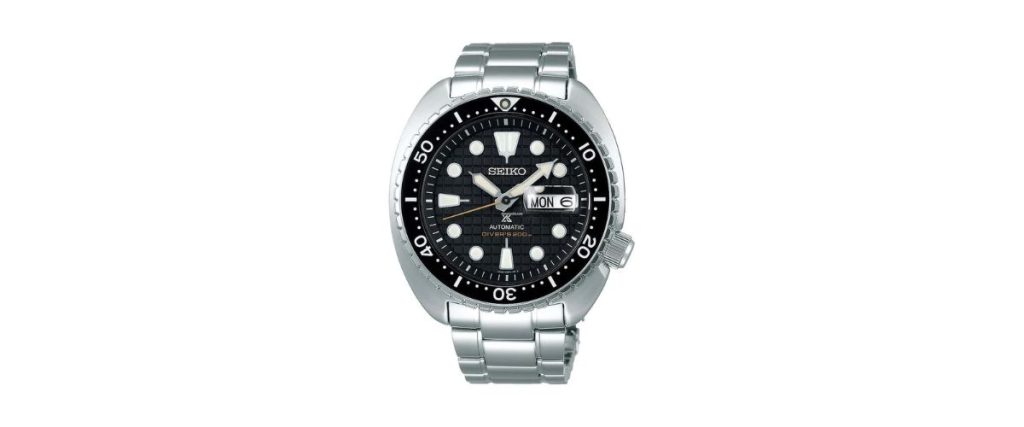
Built to be adventure-ready, this particular model is geared towards water-sport enthusiasts. It’s a popular and affordable choice for those who like diver watches, and it meets 200-meter ISO standards for water resistance.
Although this might sound pretty normal, I like to highlight the reliability of the screw-down crown and caseback.
Durable construction matters, too, as it can be felt in the 45mm stainless steel case and bold and black ceramic rotating bezel. The sapphire crystal is anti-reflective, which can be pretty crucial in the water.
For those looking for easy readability and bold wrist presence, this is a timepiece that’ll stand out. On my end, it’s always the internal that I’m the most interested in.
An example of this would be the movement that’s being used. The King Turtle works off of a 4R36 automatic caliber movement, which includes 24 impressive jewels. More importantly, it promises a 41-hour power reserve, which can be automatically or manually wound.
Affordability is the name of the game here, and the watch will only run you $625.
3. Tissot PRX Powermatic 80 40mm (ref. T137.407.11.041.00)
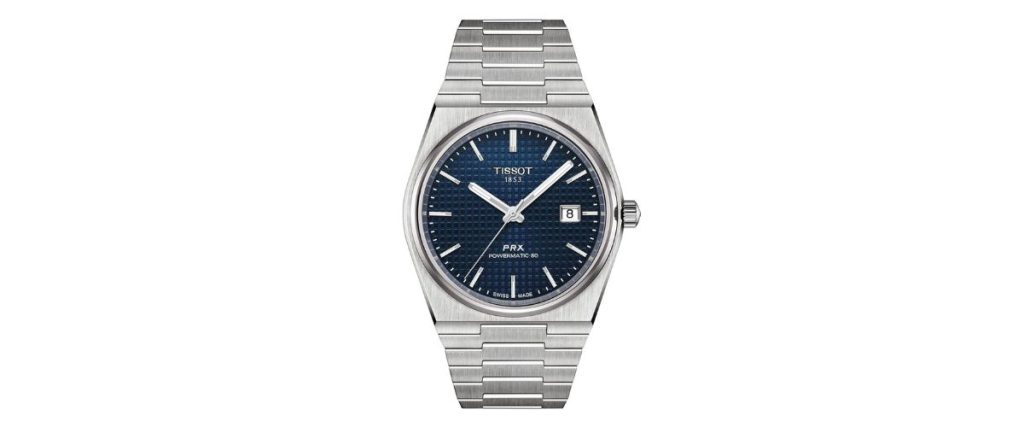
With a Powermatic 80 automatic movement, this translates to an 80-hour power reserve and a patented Nivachron hairspring.
In short, you’re getting more than enough precision and anti-magnetism here. I’m very much inspired by the retro-design choices, as the watch has some similarities to the original Tissot case design from 1978.
The 40mm case is a great middle-ground for most people, and its thickness sits just under 11mm. I can’t deny the aesthetics of this watch, but that isn’t the only thing that matters. Thankfully, Tissot delivers a high-quality build with 316L stainless steel on top of a tonneau-shaped case.
I’d also like to point out the bracelet, as I’m a huge fan of butterfly clasps. What you’re looking at in this watch is Swiss-made reliability, which is hard to question if you ask me.
Between 100m water resistance, a beautiful see-through case back, and everyday reliability, the PRX Powermatic is a winning choice in my book.
When it comes to the price, all you have to swing is $775, and it’s yours.
4. Hermétique Tourer Blue (ref. N/A)

Stemming from the Hermétique collection, the Tourer Blue stands out amongst the other colorways, if you ask me. What I appreciate is that they didn’t get too bold with the color choice, and it blends very well with the surrounding steel.
Another watch that keeps exploration in mind, you’re getting 150-meter water resistance and an integrated crown for ambidextrous usability. Even better, the watch boasts double-dome sapphire, so you won’t be easily breaking this one.
It may not be hard to come by, but legible design is a crucial focal point and one that I’m pretty critical about. This watch meets the standard with a matte finish on the dial, polished syringe-style hands, and Super-Luminova BGW9 for bright visibility.
You can choose between an FKM rubber strap or stainless steel for a better match. This makes it a perfect option for indoor and outdoor environments.
The cost for this one sits at $632.50, making it more than reasonable for everyday wear.
5. Citizen Promaster Fujitsubo Super Titanium (ref. NB6021-17E)
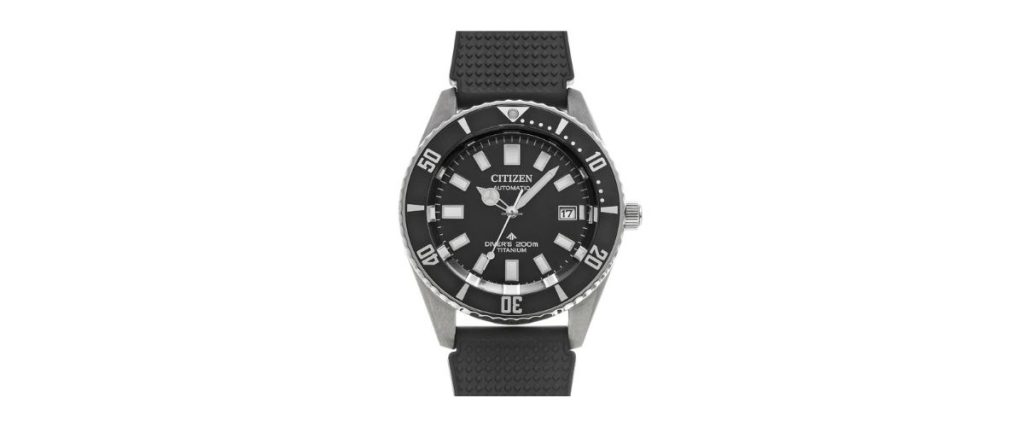
Another diver’s watch that’s worth the attention is the Promaster Fujitsubo from Citizen, which takes inspiration from their 1977 Challenge Diver. Considering this watch will continue to tick after extensive water exposure, you’ll feel like you never have to take it off.
The watch works off of an in-house automatic Caliber 9051. This comes with a 42-hour power reserve and the mechanical quality you’re looking for.
I was actually pretty surprised at how protected this watch is inside and out. What I mean by this is the sapphire crystal, antimagnetic resistance, and 16,000 A/m will have your back for a long time.
If you consider yourself somewhat of a collector, this is a great model to add to your lineup. It ships in a dive tank box and boasts a very classic appeal that’ll never go out of style. Those who like to get in the water can rely on the 200m water resistance and durable black polyurethane strap.
A little pricer than some others on this list, the Promaster Fujitsubo remains affordable at $825.
6. Seagull 1963 38mm (ref. N/A)

For this watch, you’re looking at a mechanical chronograph watch with a very vintage appeal to its design. I can’t deny that the simplicity of this watch is what makes me want one for myself.
It operates with a Seagull ST19 hand-winding movement, which is also based on the Swiss Venus 175. I always have to look for it, and I was happy to learn the movement includes 21 gorgeous jewels.
Add on the fact you’re getting 21,600 BPH and a 42-hour power reserve, and the watch can easily last a lifetime. It’s important to note there’s quite a bit of historical significance here. For starters, the watch is inspired by the first military aviation watch in China.
Other important technical details include a reliable 316L stainless steel case, 47mm lug-to-lug length, and a 3 ATM water resistance rating. The 12.7mm thickness is a bit much for me personally, but it offers a good balance to the rest of the specs.
The price point is hard to argue with, as you can grab this watch for only $382.
7. Nivada Grenchen Antarctic Spider (ref. 32023A09)

The first thing I noticed about this watch is its silver sunray dial, which features eight “spider leg” lines. Flaring from the center of the watch, this is one of the most unique details about the watch if you ask me.
I’m also loving the fact that they went with the classic Dauphine hands and vintage reissue of the rare 1970s Nivada Grenchen model.
While the movement is pretty standard here, that doesn’t mean you won’t get reliability. It’s a Swiss-made Soprod P024 automatic movement with a screw-down crown. The build itself is pretty refined, featuring a 38mm stainless steel case, 11.1mm thickness, and the 20mm lug width is pretty reasonable if you ask me.
Durability takes a modern approach with this watch as it promises 100m water resistance and a double-domed sapphire crystal. I’m actually pretty glad they’re versatile with the strap options on this model. Whether you prefer leather, flat link, or even rice bead design, you have several to choose from.
Sitting closely under the $1,000 mark, the Antarctic Spider retails for $945.
8. Formex Field Automatic 40mm (ref. 0660.1.6543.723)

I always have respect for a 40mm case, as it looks sturdy but not too bold for my skinnier wrists. This Field Automatic from Formex is built with the Sellita SW200-1 automatic movement, which comes with 26 jewels, a clear date display, and a 41-hour power reserve. Even better, this particular movement can easily be serviced in most parts of the world if needed.
You won’t have any issues with legibility, and I’m a pretty big fan of the sandwich-style dial features. Recessed numerals offer some depth to the dial, and I’d encourage anyone to appreciate the vintage Super-LumiNova.
The watch is resistant to water up to 150m, and the construction of the watch makes it viable for outdoor treks. From tool-free strap options to the overall focus on physical comfort, Formex found a great middle ground of luxury, affordability, and comfort.
Sitting pretty close to the $1,000 limit, the Field Automatic from Formex is available for $995.
9. BOLDR Venture Wayfarer-Khaki (ref. N/A)

Featuring a 24-hour sundial design, this affordable watch from BOLDR is one that I feel shouldn’t be overlooked. Paying homage to the vintage 24-hour design, it definitely caters to the outdoor crowd. More specifically, anyone who operates outside of normal day/night cycles could easily wear this watch all day.
Legibility won’t ever be an issue with this model, and it’s more than adventure-ready with the promise of 200m water resistance. Once again, I was reeled in by the choice of a matt dial. Regarding the movement, it’s a Miyota 8217 automatic and can be hand-wound as well.
Although I can understand why people love stainless steel, I would roll with titanium every single time. This watch boasts a lightweight titanium case.
Even with the 12mm thickness, 38mm case, and 44mm lug to lug size, the watch doesn’t feel as big as it looks. One caveat to consider is that this Venture Wayfarer includes a tough nylon strap, a material that isn’t necessarily my first choice.
If this sounds like it would be fitting for your collection, there isn’t much holding you back at $339.
10. Traska Freediver Carbon Black (ref. 1187)
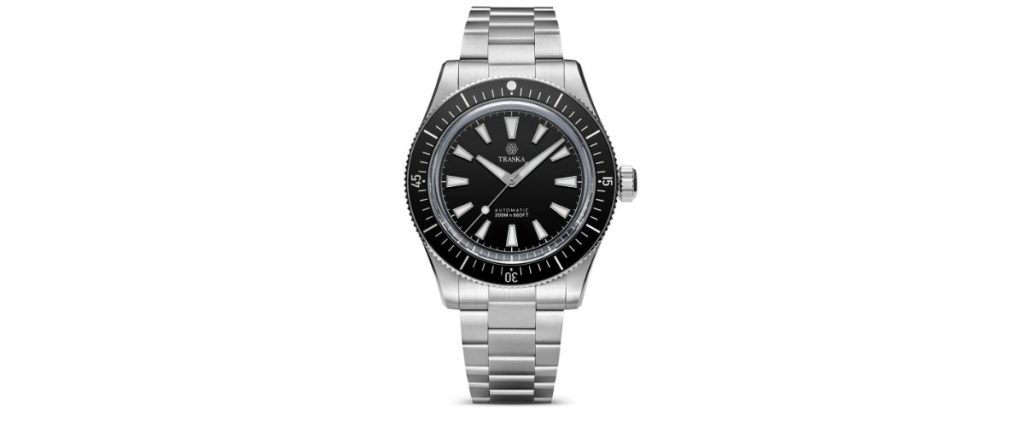
What really struck a chord with me about this watch is its generally robust construction of it. For the most part, this is seen not only in the 316L stainless steel but also in the special hardening treatment it has received. Don’t worry about knocking your wrist on counters or door frames; this watch can take it.
Aside from that, it’s a great watch for people who prefer boxed sapphire crystal instead of the standard circular style. Even with the double-domed sapphire, you won’t have to worry about light messing with your view.
You get a pretty standard movement here, but a reliable one at that. I’m easily sold on the Japanese Miyota 9039 movement, but this doesn’t come with date information.
However, if you opt for the Miyota 9019, you’ll get a date window. It’s a comfortable watch that promises a higher quality than what’s seen on the surface level.
I have to say the price is pretty modest too, sitting at $705 and even cheaper if you go pre-owned.
11. Flygraf Flieger French Air Force (ref. YFLY24AA-AAS)

Maybe I’m biased due to my family’s history, but I always have respect for a quality military-inspired timepiece. More specifically, this Flygraf Flieger French Air Force watch is a direct collaboration with the French Air and Space Force.
Due to this alone, you’re looking at a timepiece wristwatch that you can rely on for the rest of your life. It even comes with official French military markings and a lightweight titanium case, which is a winning choice for me.
The dial is a beautiful piece of work featuring sword-shaped hands, Arabic numerals, and a sandwich-style triangle at the 12 o’clock position.
Even better, the watch includes an in-house YEMA2000 movement, which is a mechanical and automatic movement featuring 29 individual jewels. Although you don’t get an exhibition caseback here, the titanium construction makes up for it in my opinion.
The price point is more than reasonable, asking $990 brand new.
12. Lorier Falcon Series III (ref. N/A)

Channeling the vibe of mid-century explorer watches, the Lorier Falcon Series III is one you’ll want to be proactive with. It features a classic 3-6-9 dial layout, and the vintage styling makes it easily legible.
Refinement is an important focal point here, highlighting a versatile black/silver honeycomb dial and a more ergonomic Ternion bracelet.
What I really appreciate about this watch is the middle ground they created between vintage and modern styles. Don’t let the 316L marine-grade stainless steel make you think this watch is anything but average.
You get a decent 100m water resistance and the dome Hesalite crystal, which really adds to the vintage aesthetic.
Of course, you get a Miyota 90S5 automatic movement with hand-wound capabilities. The mechanical nature allows you to be a lot more hands-on with the watch, which is something I’m always looking for.
I honestly expected a higher price tag for this watch based on the description, but it will be available here soon for $499.
13. Baltic HMS 002 Silver (ref. HMS 002)
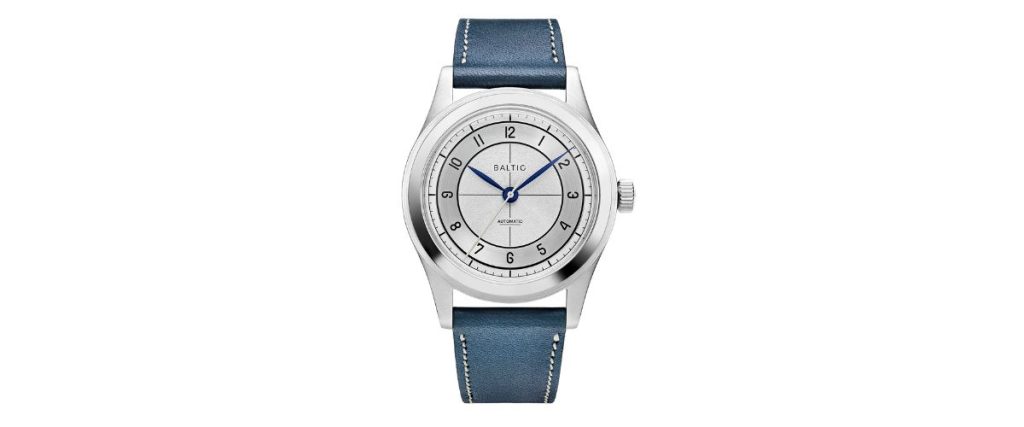
A combination of 1940s Baltic elegance and modern Art Deco style, the HMS 002 dons a sandblasted texture on the dial.
The polished leaf-shaped hands complement this, and the contrasting brushed sector dial is a beauty to look at. I have always appreciated a 38mm case, and the design is meant to support those with more active lifestyles.
It still carries a very professional look, but this watch isn’t meant to reside only in the office. It features 316L stainless steel and a 13mm thick case, so durability isn’t really much of a concern for me.
If you still aren’t sold on it, consider the benefits of the Miyota 8315 movement with a 60-hour power reserve.
What I really love about this watch is that you get the option of either a closed or exhibition case back. For me, I’m choosing the open caseback every time.
Other notable and practical features you should know about include 50-meter water resistance, a beautifully engraved crown, and multiple strap options. For the best possible match to the case design, I highly suggest going for the Italian calf leather strap.
Considering there’s so much to appreciate about this watch, it makes the price of $414 entirely worth it.
14. Vero Open Water 41 – Daybreak (ref. N/A)

With a 41mm case that’s matte bead-blasted and made of 316L stainless steel, you’re getting style and durability all in one. The Open Water 41 from Vero, as you might expect, caters to those who can appreciate a solid diver’s watch.
You can rely on its rugged performance, and it’s powered by a movement previously mentioned, the Sellita SW-200-1 automatic.
Falling into the mechanical movement category, it’s another timepiece that’s built for those who like being hands-on. Since it’s crafted with divers in mind, legibility will never be an issue here either.
I’d consider this watch to look relatively modest on the surface, and although orange isn’t my color, it definitely makes the dial noticeable.
More specifically, case dimensions are sitting at a 40mm width, including 11mm thickness and 20mm lug width. If you ask me, I’d say this is pretty versatile, making it a viable choice for many different types of people and style preferences.
Based on what you’re getting, I’d say the cost of $890 is pretty reasonable here.
15. Dan Henry 1970 Automatic Diver (ref. N/A)
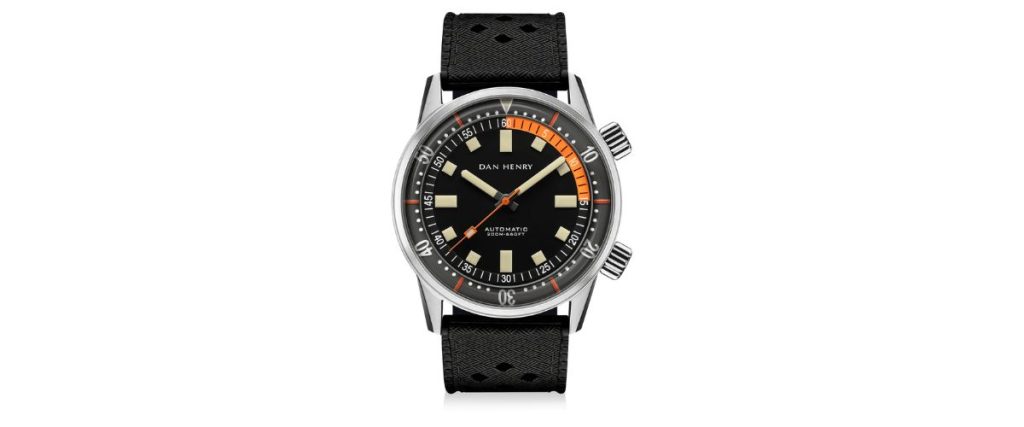
First and foremost, I have to point out that this is a limited edition diver from Dan Henry. Aside from the multiple colorways available, the deep black looks the best to me. There are only 1,970 pieces made, hence the name, which gives the watch plenty of long-term value.
Most of the specs on this watch are pretty standard, but the 14.8mm thickness definitely stood out to me. Inside the watch, you’ll find a Japan-caliber NH35 automatic movement, but that doesn’t count out its hand-wound capabilities.
The water resistance rating sits at 200 meters, and you can easily switch between a canvas leather or rubber strap. Versatility isn’t hard to find with this timepiece, and the cost makes it all feel much more worth it.
To be completely honest, reading about this watch made me expect a bit of a higher price tag, but I was definitely wrong.
This diver’s watch from Dan Henry is retailing for $310 right now.
16. Marathon 34mm Black GPM Type II Field Mechanical (ref. 6645-00-066-4279)

Delivering a military-grade feel and built to U.S. MIL-PRF-46374G standards, this watch is crafted to go to work for you. Between general reliability and functionality, this watch is meant to be used on a daily basis.
You’re getting a mechanical movement with the Seiko NH35A, which includes 24 jewels but no date complication. There isn’t much water resistance here, but you do get a legible and tactical diversity.
To highlight this further, I’m talking about titanium gas tube illumination and 12 to 24-hour scales. I was also pretty impressed with the case, which is 34mm in size and made of high-impact composite fibreshell.
The watch is pretty modest with its dimensions, but it doesn’t lack when it comes to durability and even weight distribution.
Of course, I have to respect the price point as it doesn’t get much better than $382.50, making it more than accessible to most watch lovers.
Let’s wrap up
Finding the perfect mechanical watch isn’t always a linear decision-making process. Whether it’s focusing on every layer of the design or finding a reliable retailer, I advise anyone to take their time and ask questions.
The biggest win here is that every one of these watches is affordable, without compromising on long-term quality. Your best bet to land a mechanical watch that aligns with you is by speaking with reputable industry-dedicated retailers, such as Exquisite Timepieces.
That’s how you get your hands on the details and discover the confidence that can be hard to find through spec sheets alone.


